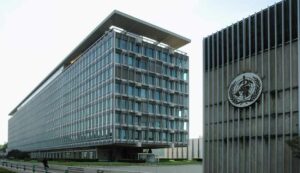WHO shares trends in acute respiratory infections, including HMP virus
Geneva: The World Health Organization (WHO) reported on the Northern Hemisphere’s trends in acute respiratory infections, including those caused by the human metapneumovirus (HMP) virus, and observed that the pace of rise in viral infections is consistent with normal patterns.

While acute respiratory infections are on the rise in many Northern Hemisphere countries, WHO noted in its disease outbreak news that these trends are not unusual and are “typically caused by seasonal epidemics of respiratory pathogens such as seasonal influenza, respiratory syncytial virus (RSV), and other common respiratory viruses, including human metapneumovirus (hMPV), as well as mycoplasma pneumonia.” It went on to say that the co-circulation of many respiratory infections over the winter months might sometimes result in a greater strain on healthcare systems that treat patients.
The WHO mentioned the hMP virus, stating that “not all countries routinely test and publish data on trends in hMPV, but hMPV is a common respiratory virus found to circulate in many countries in winter through to spring.” The majority of hMPV infections result in moderate upper respiratory symptoms that resemble the common cold and go away in a few days, while rare instances may need hospitalization due to bronchitis or pneumonia.
WHO said that it is in communication with Chinese health authorities and has not received any reports of atypical epidemic patterns, which raises concerns about the number of cases in China. According to Chinese officials, no emergency statements or reactions have been made, and the healthcare system is not overburdened. Through cooperative monitoring systems, WHO continues to keep an eye on respiratory infections at the national, regional, and worldwide levels and provides updates as necessary,” the disease outbreak report said.
There have been no documented anomalous outbreak patterns, and China’s reported levels of acute respiratory illnesses, including hMPV, fall within the typical range for the winter season.
According to Chinese officials, there have been no emergency announcements or reactions, hospital use is now lower than it was at this time last year, and the health care system is not overburdened. The public has been given health instructions on how to stop the spread of respiratory illnesses and lessen the burden of these diseases ever since the anticipated seasonal rise was noted.
“WHO advises people in winter-prone locations to take standard measures to stop the spread of respiratory infections and lower the dangers they pose, particularly to the most vulnerable. Mildly ill persons should rest and remain at home to prevent spreading the illness. People should get medical help right away if they are at high risk or if their symptoms are severe or complex. According to the WHO, people should also think about using a mask in crowded or poorly ventilated areas, cover coughs and sneezes with a tissue or bent elbow, wash their hands often, and get the appropriate vaccinations as advised by their doctors and local public health authorities.
“Based on the current risk assessment, WHO advises against any travel or trade restrictions related to current trends in acute respiratory infections,” the press release said.





